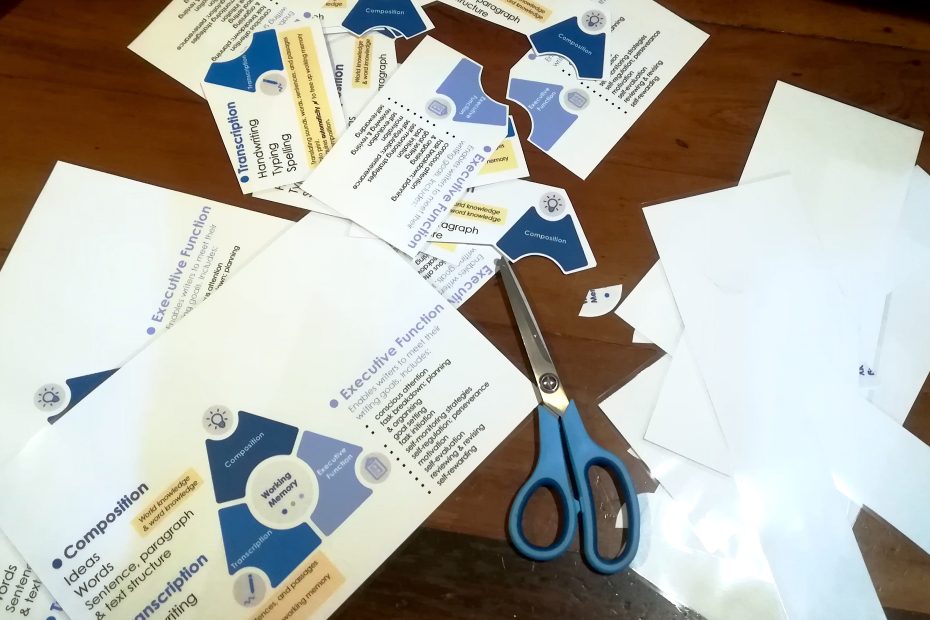Writing: one of the most complex undertakings we ask our learners to engage in.
This year, I’m supporting several schools as they turn their attention to understanding more deeply how writing develops; how it is learned; and importantly: how writing is taught.
Understanding the cognitive load involved in the process of writing helps us make some important teaching shifts – there are many components where we can work to build automaticity for our learners, freeing up cognitive capacity for other processes. When broken down in this way, we can clearly identify the components we can explicitly teach to ensure students have the knowledge and skills they need to become successful writers.
I made this puzzle as an interactive way for groups of educators to explore Berninger et al’s Not-So Simple View of Writing. Yes, they actually called it that upon updating it from earlier versions!
Print pages 2 and 3. Page 2 is the ‘base’ of the jigsaw. Cut along the dotted lines on page 3 which will be the pieces placed on top, discard the central circle and blank space. I intend to hand out multiple copies to large groups of educators: they will find people with the pieces they need to complete the puzzle, then put it all together while discussing each piece.
I’d love to know how this goes for you, and other ways you might use it!
Ngā mihi mahana,
Emma
References:
The Simple View of Writing:
Berninger, V. W., & Amtmann, D. (2003). Preventing written expression disabilities through early and continuing assessment and intervention for handwriting and/or spelling problems: Research into practise. In H. L. Swanson, S. Graham, & K. R. Harris (Eds.), Handbook of learning disabilities (pp. 345–363). New York, NY: Guilford.
Graphic source:
Learning Difficulties Australia: Writing

Kia ora,
I just want to say thank you for your resources! This is going to be really helpful for my Kaahui Ako role and developing Literacy confidence etc.
Thank you!